Notable Deaths in 2022
Newsfrom Japan
Society- English
- 日本語
- 简体字
- 繁體字
- Français
- Español
- العربية
- Русский
January 9
Kaifu Toshiki (91): Former prime minister
Kaifu rose to the office of prime minister in August 1989 and worked to rebuild public trust in the wake of a string of scandals that forced the resignation of a number of prominent politicians, including his predecessor Uno Sōsuke. Born in Nagoya, Aichi Prefecture, in 1931, he first won election to the House of Representatives at the age of 29. He served as deputy chief cabinet secretary for Prime Minister Miki Takeo and was education minister under Prime Ministers Fukuda Takeo and Nakasone Yasuhiro. As premier from August 1989 to November 1991, he was the first major leader of a democratic country to visit China following the 1989 Tiananmen Square uprising and made the controversial decision to send Self-Defense troops to the Persian Gulf to provide logistic support to the US military. He left the Liberal Democratic Party in 1994 to head the now defunct New Frontier Party.
Related article
January 10
Mizushima Shinji (82): Manga creator
Born in Niigata Prefecture in 1939, Mizushima worked various jobs while pursuing his interest in manga. He began his career as a mangaka after finishing second in a contest for new artists run by Osaka-based manga publisher Hinomaru Bunko. Known for his realism, his works centered around baseball, including Otoko do ahō kōshien (“Men’s Dumbass Kōshien”), which debuted in the weekly comic anthology Shōnen Sunday in 1970, and later classics like Dokaben and Abu-san.
Related article
February 1
Ishihara Shintarō (89): Author, former member of the House of Representatives, former governor of Tokyo
Ishihara charged onto the literary scene while a student at Hitotsubashi University with his 1956 novel Taiyō no kisetsu (trans. Season of Violence), which won the Akutagawa Prize for its depiction of rebellious postwar youth culture. Later as a member of the Liberal Democratic Party, he served in both the upper and lower houses of the Diet and held cabinet posts as director general of the Environmental Agency (now the Ministry of the Environment) and minister of transport. He was elected governor of Tokyo in 1999 and won four terms before resigning in 2012 to form the Sunrise Party. He served one term in the lower house following the party merging with Nippon Ishin no Kai (Japan Innovation Party), but failing in his reelection bid, he retired from politics in 2014.
Ishihara never shied from controversy and often drew heat with his right-wing views, including calls to revise the war-renouncing articles of the Japanese Constitution. He garnered attention oversees with his 1989 book, co-authored with Sony founder Morita Akio, Nō to ieru Nihon (trans. The Japan That Can Say No). As governor, he introduced a number of fiscal and environmental measures, helped launch Tokyo’s bid to host the 2020 Olympics, and reignited a row with China with his plan for the metropolitan government’s purchase of the disputed Senkaku Islands from their private owner.
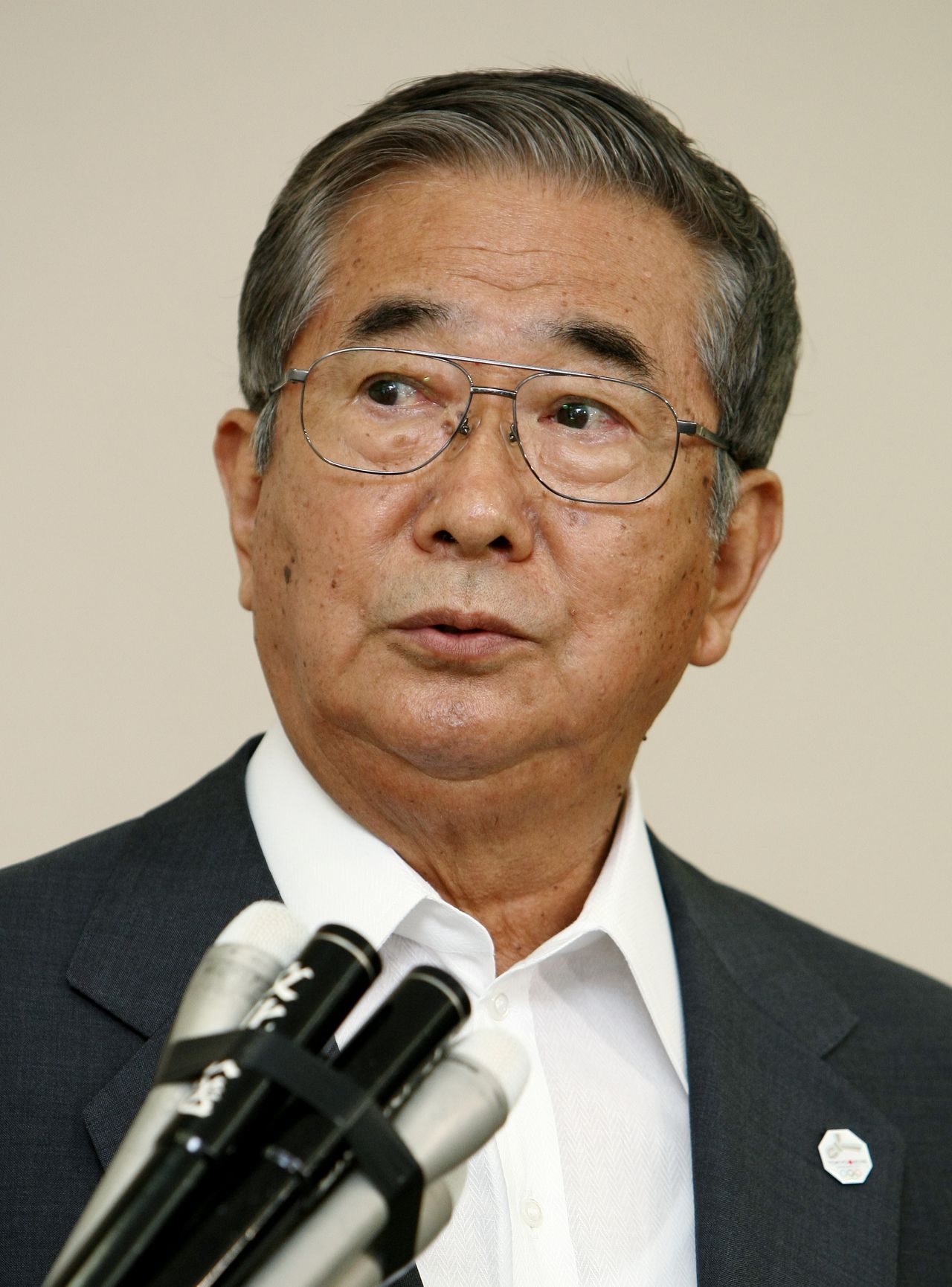
Ishihara Shintarō speaks to the press in July 2009. (© Jiji)
February 18
Ōmachi Yōichirō (90): Conductor
A graduate of the Tokyo University of the Arts, Ōmachi went on to study conducting at the University of Music and Performing Arts, Vienna, and honed his skills under such luminaries as Herbert von Karajan and Karl Bohm. The Tokyo native was the first Japanese conductor to be based permanently in Europe, joining the City Opera House in Dortmund in West Germany in 1968. He conducted the Cleveland Orchestra in the United States in 1980, the Vienna State Opera from 1982 to 1984, and conducted the first-ever performance of Giacomo Puccini’s opera Turandot in China in 1995.
April 7
Fujiko A. Fujio (88): Manga creator
Born Abiko Motoo in 1934 in Toyama Prefecture, he started drawing manga in collaboration with his elementary school classmate Fujimoto Hiroshi (Fujiko F. Fujio), creator of such seminal works as Doraemon. Abiko moved to Tokyo in 1954, taking up residence at the famed Tokiwa-sō with future manga legends like Tezuka Osamu, Akatsuka Fujio, and Ishinomori Shōtarō. Known for his dark humor, he created a long list of notable manga on his own and as part of the Fujiko Fujio duo, including Obake no Q-Tarō, Ninja Hattori-kun (Ninja Hattori), Kaibutsu-kun (The Monster Kid), and Warau sērusuman (The Laughing Salesman).
Related articles
- Fujiko A. Fujio’s Manga Legacy: The Dark Humor and Underdog Spirit of Abiko Motoo
- Tokiwa-sō, Legendary Manga Incubator, Restored for Fans
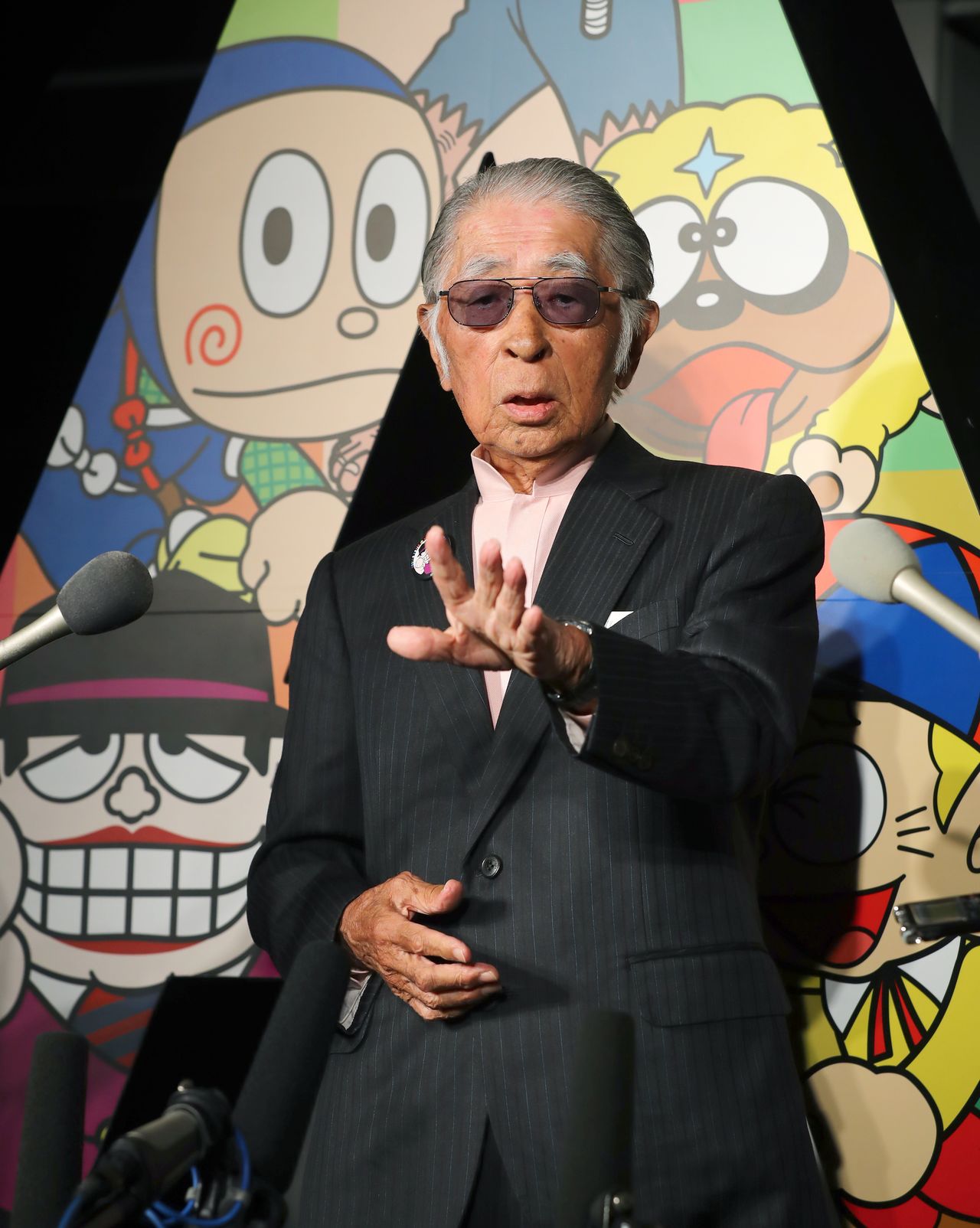
Fujiko A. Fujio in October 2018. (© Fujiko Studio/Jiji)
June 2
Idei Nobuyuki (84): Former head of Sony
Idei, who was born in Tokyo in 1937, graduated from Waseda University and joined Sony in 1960. In 1995, he was tapped as president by his predecessor Ōga Norio. During his 10 years at Sony’s helm, Idei adopted a strategy of shifting the company’s base from manufacturing to content, expanded its software business, including movies and music, and oversaw the launch of such hit products as the VAIO laptop computer and the AIBO robot. However, Sony also saw its share in core sectors like the productions of televisions and portable music players decrease, triggering the so-called Sony shock when in 2003 the company’s stock price plummeted. In 2000, he was appointed chair of the government’s IT Strategy Council.
Related article
July 8
Abe Shinzō (67): Former prime minister
Abe was born into a political family in Tokyo in 1954. Upon graduation from Seikei University he went to work for Kobe Steel, later becoming a political secretary for his father before winning election to the lower house of the Diet in 1993 on the Liberal Democratic Party ticket. As deputy chief cabinet secretary, he accompanied Prime Minister Koizumi Jun’ichirō on his historic visit to North Korea in 2002 and was propelled into the limelight by voicing support for a hardline stance on the abduction issue.
Abe’s first stint as prime minister was cut short after just one year by a chronic medical condition. He returned as premier in 2012 and remained in office until 2020, becoming the longest-serving prime minister in Japanese history. During his tenure, he introduced his economic policy, dubbed “Abenomics,” consisting of the “three arrows” of monetary easing, fiscal stimulus, and growth strategy. He oversaw two hikes in the consumption tax, enacted a 2015 law allowing for the limited exercise of collective self-defense, and pushed to amend the Japanese Constitution. Abe also worked hard on diplomacy, meeting with world leaders, promoting the Free and Open Indo-Pacific strategy, and putting effort into establishing the Quad, a cooperative framework among Japan, the United States, Australia, and India.
Abe wielded overwhelming power, something that drew supporters and detractors, as did his right-leaning stances. He came under intense scrutiny over scandals related to a contract on the sale of state-owned land to private school operator Moritomo Gakuen and approval of a new veterinary school, Kake Gakuen, to be built in a specially designated strategic district in Ehime Prefecture. After stepping down because of his health, he remained an influential figure in the LDP. He was shot and killed in Nara while campaigning for an LDP candidate ahead of upper house elections.
July 25
Shimada Yōko (69): Actor
A native of Kumamoto Prefecture born in 1953, Shimada garnered international acclaim as the heroine of the 1980 US television adaptation of James Clavell’s novel Shōgun, a role for which she won a Golden Globe for Best Actress in a Television Series. She first gained prominence in Japan in 1971 starring in the sequel to the popular series Zoku hyōten (Freezing Point, Continued). Her affair in the late 1980s with a well-known singer made headlines, as did her publication in 1992 of a nude photography book, which became a best seller.
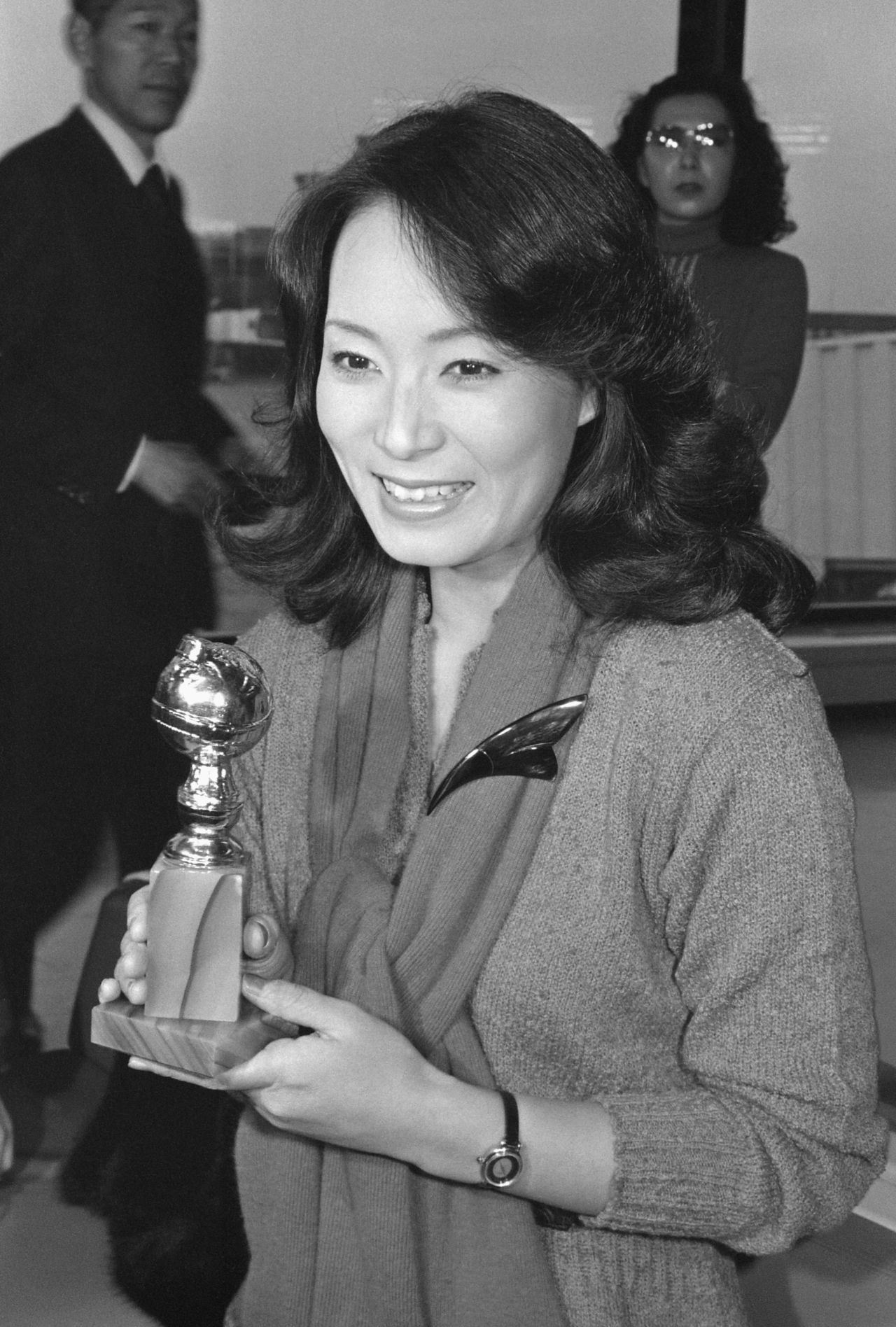
Shimada Yōko holds her Golden Globe Award for Best Actress at Narita International Airport on February 27, 1981. (© Jiji)
August 5
Miyake Issey (84): Fashion designer
Known as an experimenter, Miyake harnessed new techniques to create clothing based on the concept of “a single piece of cloth,” including developing new methods of pleating. Born in Hiroshima in 1938, he studied at Tama Art University in Tokyo and later enrolled at the renowned French dressmaking and tailoring school Chambre Syndicale de la Couture Parisienne in Paris. He honed his fashion design skills further while working in New York. He established Miyake Design Studio in Tokyo in 1970 and displayed his first independent collection in a Paris fashion show three years later. His clothing and perfumes were worn by prominent figures in all walks of life. In 2009, Miyake wrote a letter to then US President Barack Obama sharing his experience as a hibakusha atomic bomb survivor and urging him to visit Hiroshima on the anniversary of the atomic bombing of the city, which drew attention when it was printed in the New York Times. He was awarded the Order of Culture by the Japanese government in 2010.
August 11
Mori Hanae (96): Fashion designer
Mori was a pioneer of the Japanese fashion world. Born in Shimane Prefecture, she graduated from Tokyo Woman’s Christian University and went on to study dressmaking. She opened a clothing shop in Shinjuku in 1951 and designed costumes for hundreds of movies, including by acclaimed director Ozu Yasujirō. In 1965, she presented her first collection overseas in New York, gaining praise for its fusion of East and West, and in 1977 she was the first Asian to become an official member of prestigious La Chambre Syndicale de la Couture Parisienne in Paris. Her designs were worn by such notable women as Grace Kelley, Nancy Reagan, and Empress Masako. She was awarded the Order of Culture by the Japanese government in 1996.
August 24
Inamori Kazuo (90): Founder of Kyocera
Inamori put his managerial stamp on a number of Japan’s biggest firms. Born in Kagoshima in 1932, he graduated from Kagoshima University and worked for an insulator maker in Kyoto before establishing the firm Kyoto Ceramic, the predecessor of Kyocera, with colleagues in 1959. As president, he developed the company into a globally leading electronic parts maker. In 1984, he established DDI (latter KDDI) with other companies following the telecommunications deregulation that broke the monopoly of Nippon Telegraph and Telephone Corporation. Later, he oversaw the restructuring of Japan Airlines following its bankruptcy in 2010, allowing the carrier to relist on the Tokyo Stock Exchange in just two years.
Related article
October 1
Antonio Inoki (79): Professional wrestler, former member of the House of Councillors
Known for his catchphrase moeru tōkon (burning spirit), Inoki thrilled generation of professional wrestling fans with his “strong style” incorporating aspects of martial arts, helping raise the status of the sport. Born in Yokohama in 1943, he emigrated with his family to Brazil when he was 13 years old, where his size caught the eye of legendary wrestler Rikidōzan. He made his pro wrestling debut in 1960 along with Giant Baba, with the two stars going on to form their own successful promotions. Inoki faced off against some of the biggest names in the Japan and overseas, including Tiger Mask, Stan Hansen, and Hulk Hogan. In 1976 he took on undisputed heavyweight boxing champion Muhammad Ali in front of a packed stadium in a bout billed as “The War of the Worlds.”
He entered politics in 1989 when he won election to the upper house of the Diet as representative of the Sports and Peace Party, which he founded. In 1990, he traveled to Iraq on a self-appointed diplomatic mission, negotiating with the government of Saddam Hussein to gain the release of Japanese hostages. He was elected to the House of Councillors again in 2013, running on the Nippon Ishin no Kai (Japan Innovation Party) ticket, and used his personal connections for diplomacy, including with North Korea, which he visited several times while in office.
Related article
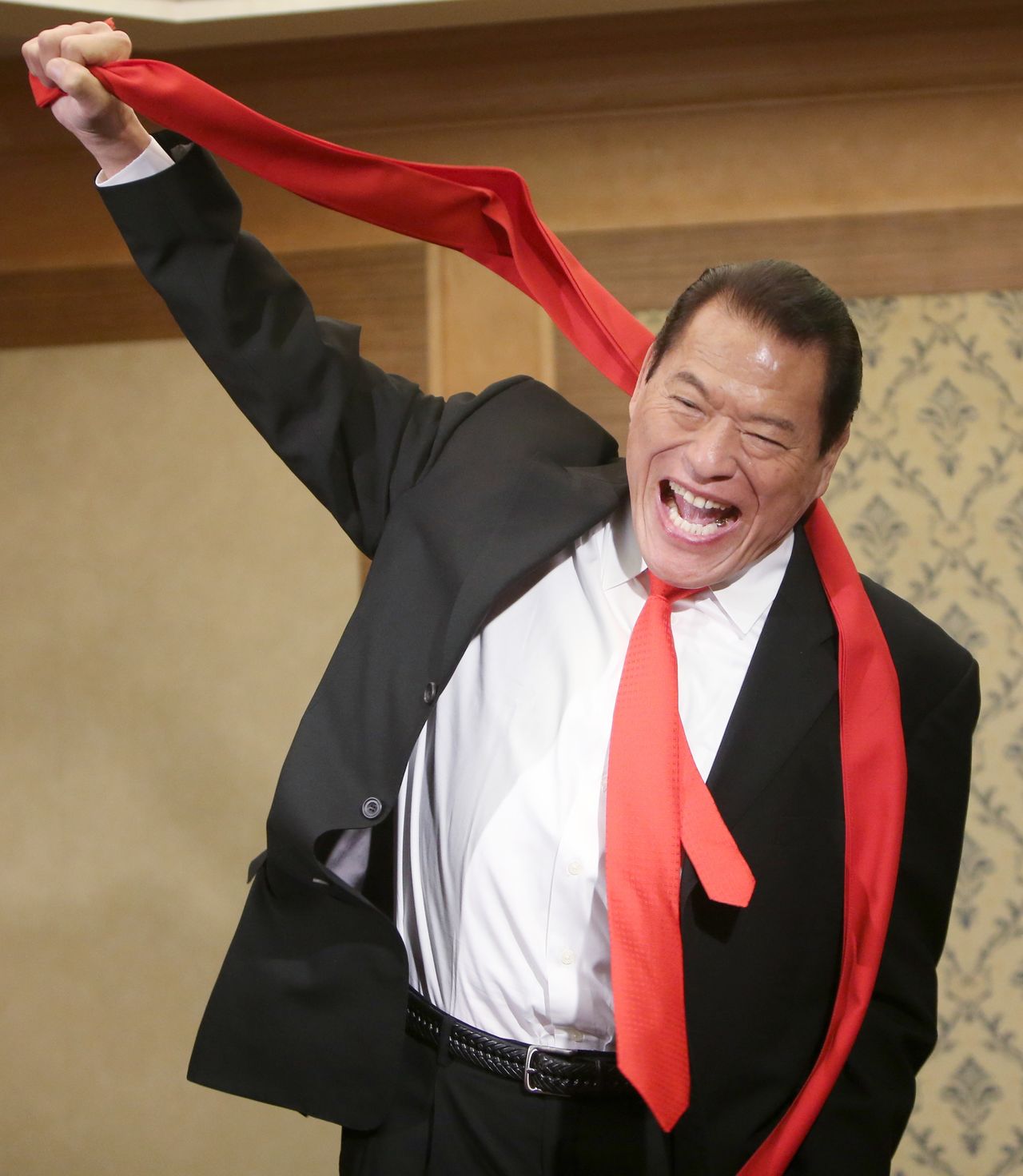
Antonio Inoki in July 2014. (© Jiji)
December 28
Isozaki Arata (91): Architect
A leader of the postmodern architectural movement in Japan, Isozaki created structures in his home country including the Art Tower in Mito, Ibaraki, as well as overseas, including the Museum of Contemporary Art in Los Angeles, California. Born in Ōita in 1931, he studied architecture at the University of Tokyo and worked under the celebrated architect Tange Kanzō as he made his own name.
Known as a thinker who sought to meld modern thought, art, and culture with architecture, he was also recognized for his projects that were never built, including a proposal for the Tokyo Metropolitan Government complex that stood out in a field of 200-plus-meter blueprints as a low-key, sub-100-meter structure built around a central open space. He nonetheless made his mark at home and abroad, winning the Pritzker Prize in 2019.
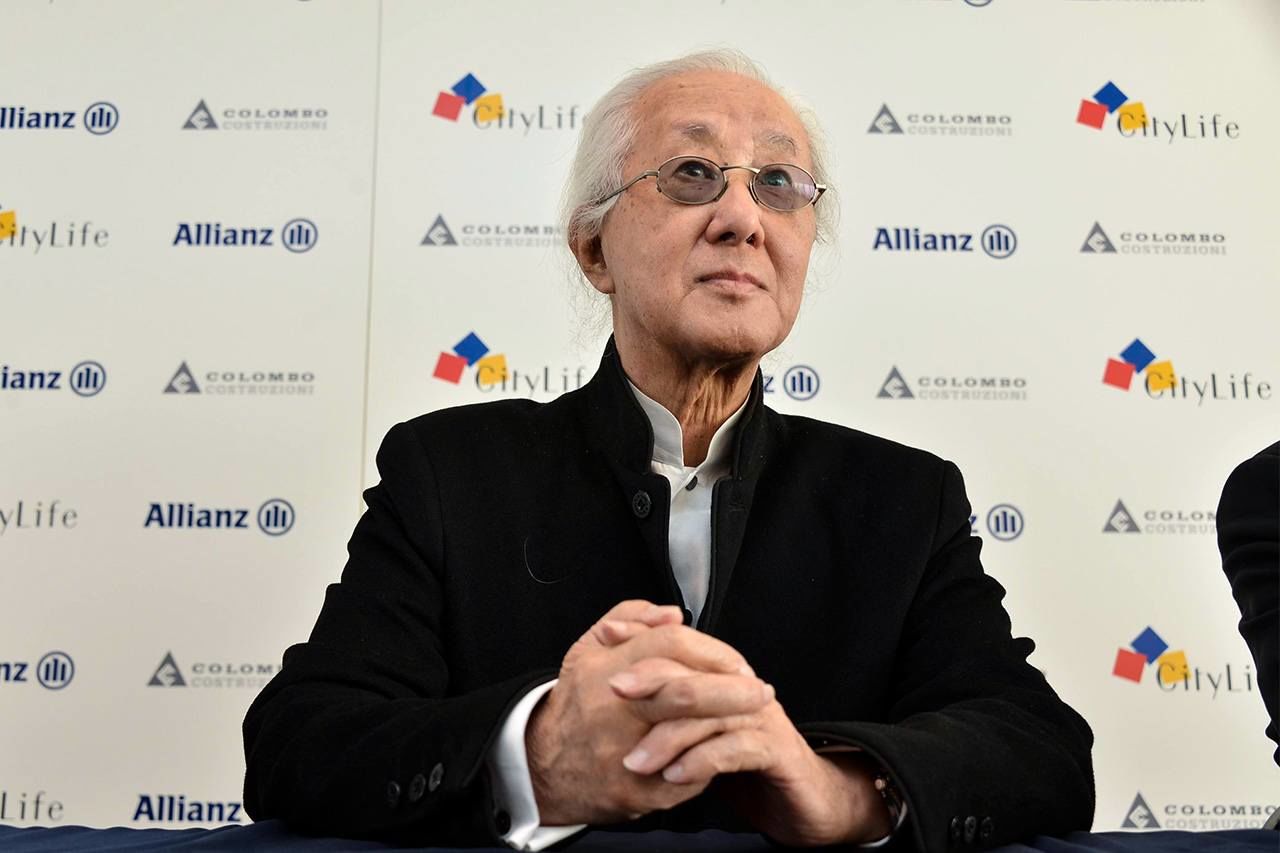
Isozaki Arata in October 2014. (© IPA/Sipa USA; via Reuters Connect)
(Originally published in Japanese. Banner photo: Prime Minister Abe Shinzō during a press conference at the Kantei, the official residence of the prime minister, on December 9, 2019. © Jiji.)